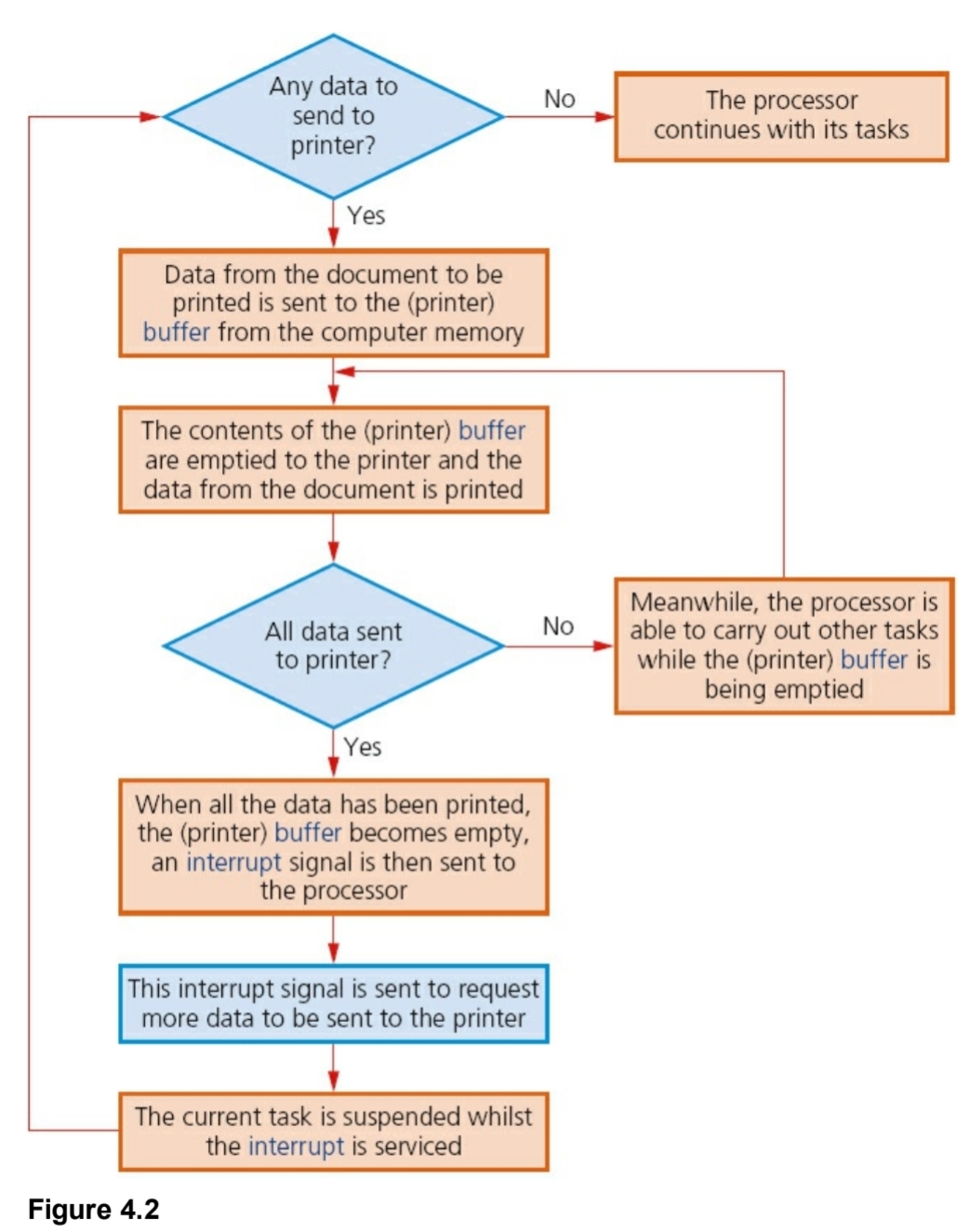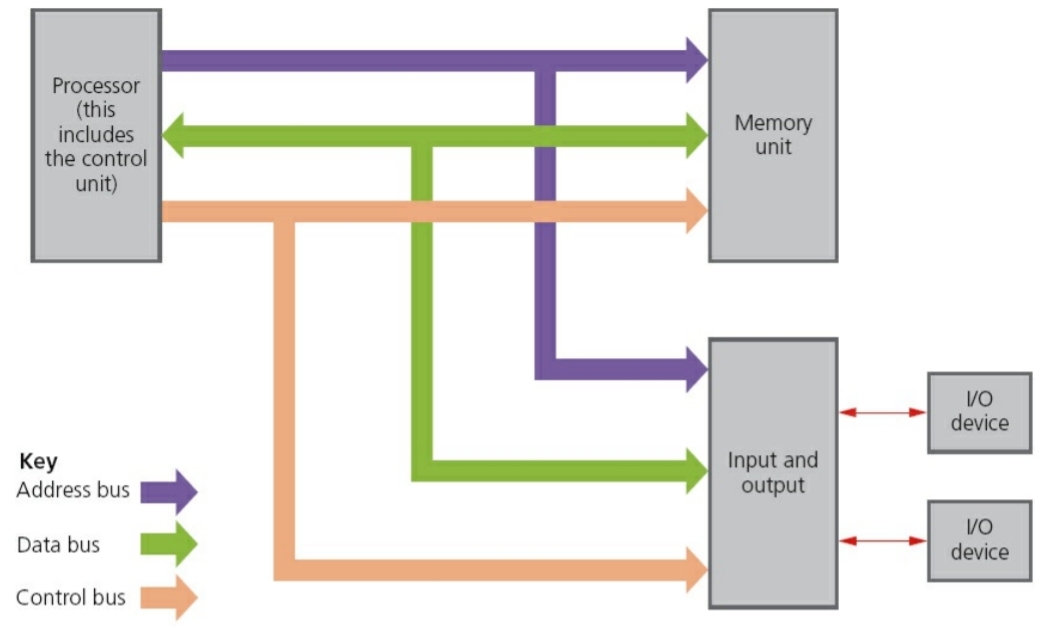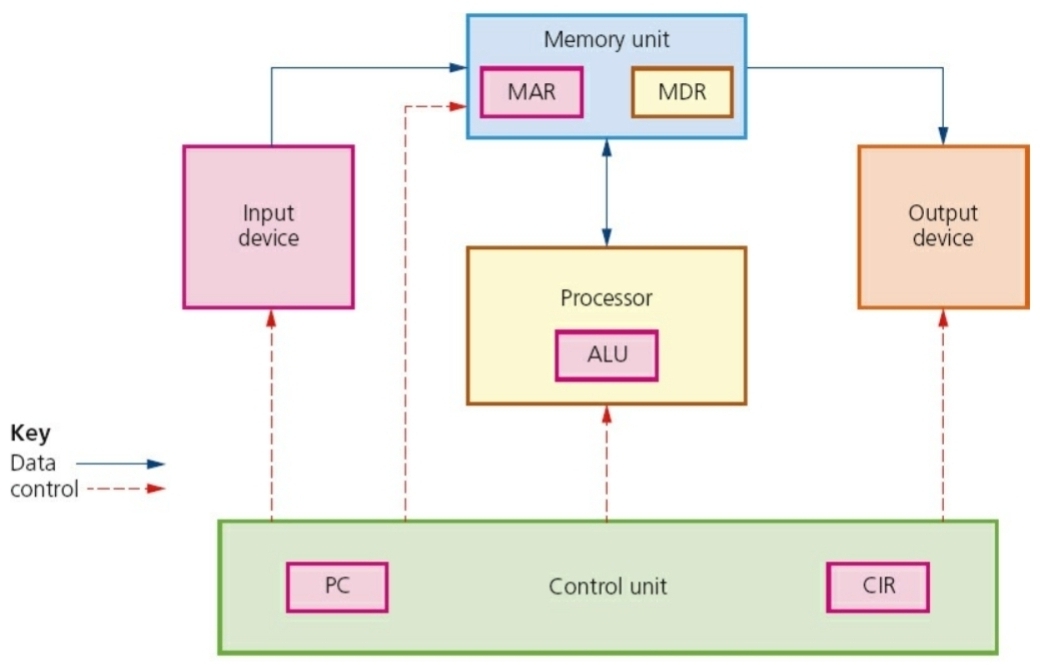CH 04 : Operating Systems And Computer Architecture
Operating Systems
- ==Operating System(OS)==: It is a computer software running in the background when the computer is on, and performs various operations.
- It is also responsible for the communication between hardware and software.
- Operating systems make it alot easier to use computers.
- Some of the tasks an OS performs:
- Multitasking
- Multiprogramming
- Error handling
- Loading and running software
- Memory management
- Security (passwords etc)
- Input and output control
- Windows and Linux are examples of OS.
- When a computer is turned on:
- The initial starting programs are loaded from ==Read Only Memory(ROM),==
- Different components of the computer are checked for errors,
- The OS is loaded into the computer memory.
Interrupts And Buffers
==Interrupt==: It is a signal sent to the Processor from a device or software, to make the Processor ^^temporarily^^ stop its current operation and service another.
- An Interrupt is sent when for example, a page is jammed in the printer, or when a software error occurs.
- Interrupts allow computers to ^^multitask^^.
- When an Interrupt occurs, the status of the currently running task is saved using an ==Interrupt Handler.== so that the processor can resume it after the Interrupt is serviced.
==Buffer==: It is a ^^temporary^^ memory area.
- Buffers are filled from computer memory and emptied to the hardware, allowing the processor to perform other tasks in the meanwhile.
Example to explain how Buffers and Interrupts are used together, while a printer is being used:

Computer Architecture
==Von Neumann Architecture==: A computer system which can store programs in a memory. The idea was developed by ^^John von Neumann^^.
- Before Neumann, computers had to be fed data while they were running, so for every task the data had to be fed immediately before-hand.
In a von Neumann system, a ==Memory Unit, Processor(containing a Control Unit)== and the hardware are connected through ==Buses== to perform different tasks.

==Buses==: The connections which transport data around the system and also maintain data ^^synchronization^^.
- ==Address Bus:== ^^Unidirectional^^ Bus carrying signal related to the addresses of the memory contents.
- ==Data Bus:== ^^Bidirectional^^ Bus responsible for moving the data and contents of the memory around the system.
- ==Control Bus==^^: Unidirectional^^ Bus carrying signals related to control and coordination of all activities in the computer.
==Registers==: High speed storage areas within the computer system, which are needed to store and ^^manipulate^^ data.
- ==Memory Address Register(MAR)==: Address which contains the location of the memory contents.
- ==Memory Data Register(MDR)==: Register which contains the content from memory.
- ==Arithmetic Logic Unit(ALU)==: Register which allows the ^^calculations and logic operations^^ to be performed within the computer.
- ==Program Counter(PC)==: Register which contains the instructions for the next task to be performed.
- ==Current Instruction Register(CIR)==: Register which contains the instructions for the current task.

==Memory Unit:== It contains all the data to be processed and its addresses as well.
==Processor==: The part where data is processed and the necassary logic operations are carried out.
==Control Unit==: It controls the operation of the memory, processor and input/output devices.
- Control Unit reads an instruction from memory and tells the other components how to function, through Control Bus.
==Input/Output Devices==: Ways of feeding data into a computer and/or getting it out.
Fetch-Execute Cycle
- To perform a task, instructions for the said task are ^^Fetched^^ from the memory and Processed before being ^^Executed^^.
- ==Fetch==:
- Instructions for the next task are fetched from the PC and put into CIR through Data Bus.
- PC is ^^incremented^^ by 1.
- Instructions are sent to the Processor(through Data Bus) to be decoded.
- ==Execute==:
- Processor sends the decoded instructions as ^^control signals^^ using the Control Bus, to other components of the system, so that the instructions can be executed.